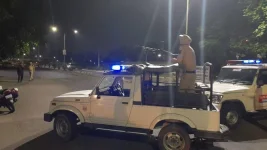- Views: 4K
- Replies: 10
Hindustan Aeronautics Limited (HAL) is set to resume production of the Sukhoi Su-30 MKI fighter jet at its Nashik division by early 2025, marking a significant boost to India's air defence capabilities and its "Make in India" initiative.
The move comes after a four-year hiatus, with the first of the 12 newly contracted aircraft expected to be delivered to the Indian Air Force (IAF) by April 2027.
The Ministry of Defence recently awarded a ₹13,500 crore (approximately USD 1.62 billion) contract to HAL for the procurement of 12 Su-30 MKI aircraft, along with associated equipment.
This contract follows the completion of the last batch of 12 Su-30 MKIs produced at the Nashik facility in the fiscal year 2019-20. The IAF currently operates a fleet of 260 Su-30s, and these additional aircraft will replace those lost in accidents over the years.
HAL's Nashik division, established in 1964, has a long history of aircraft manufacturing, including licensed production of various MiG variants and the Su-30. Preparations for the renewed production are underway, with most structural parts and components to be sourced from local vendors. Some materials will still be imported from Russia, and the AL-31FP engines will be manufactured at HAL's Koraput facility in Odisha.
The Su-30 MKI, a twin-engine, multirole air superiority fighter developed by Russia's Sukhoi and built under license by HAL, is a crucial component of the IAF's combat fleet. Known for its versatility, it is capable of engaging in both air-to-air and air-to-ground combat. The aircraft's proven track record in exercises and real-world scenarios underscores its importance to India's defence strategy.
India has used Su-30 MKIs in various military exercises including Garuda with France, Cope India with USA, and Red Flag with USA. The fighter jets are also expected to be deployed in Gagan Shakti 2024, IAF's pan-India military exercise.
The new Su-30 MKIs will boast an impressive 62.6% indigenous content, reflecting India's commitment to bolstering its domestic defence industry. The project is expected to enhance local manufacturing capabilities, create jobs, and foster skill development in aerospace manufacturing.
It also demonstrates a continued strategic partnership between India and Russia in the defence sector. This partnership has been further cemented by a separate ₹26,000 crore (approximately USD 3.12 billion) contract signed in September for 240 AL-31FP aero-engines for the IAF's Su-30 fleet, with deliveries to be completed over eight years.
Beyond production, HAL is also slated to upgrade the IAF's existing Su-30 fleet at an estimated cost of ₹65,000 crore (approximately USD 7.8 billion). This extensive modernization program will include equipping the fighters with the indigenous Uttam active electronically scanned array (AESA) radar, advanced electronic warfare suites, new weapon control systems, upgraded avionics, and new weapons. Uttam AESA radar is being developed by the Electronics and Radar Development Establishment (LRDE) of India's DRDO.
The Su-30 upgrade program has also garnered international interest. Armenia, which operates a small fleet of Russian-built Su-30SM fighters, is reportedly seeking India's assistance in upgrading its aircraft.
The proposed upgrade for Armenia is similar to the IAF program, focusing on avionics, electronic warfare suites, and weapons. This signifies the international recognition and trust in the technological capabilities developed by HAL in connection to the Su-30MKI project.
The reactivation of the Su-30 MKI production line signifies a significant step forward for India's defence self-reliance and will further strengthen the IAF's operational capabilities for years to come. The final aircraft from this new batch is expected to roll out in March 2029.






